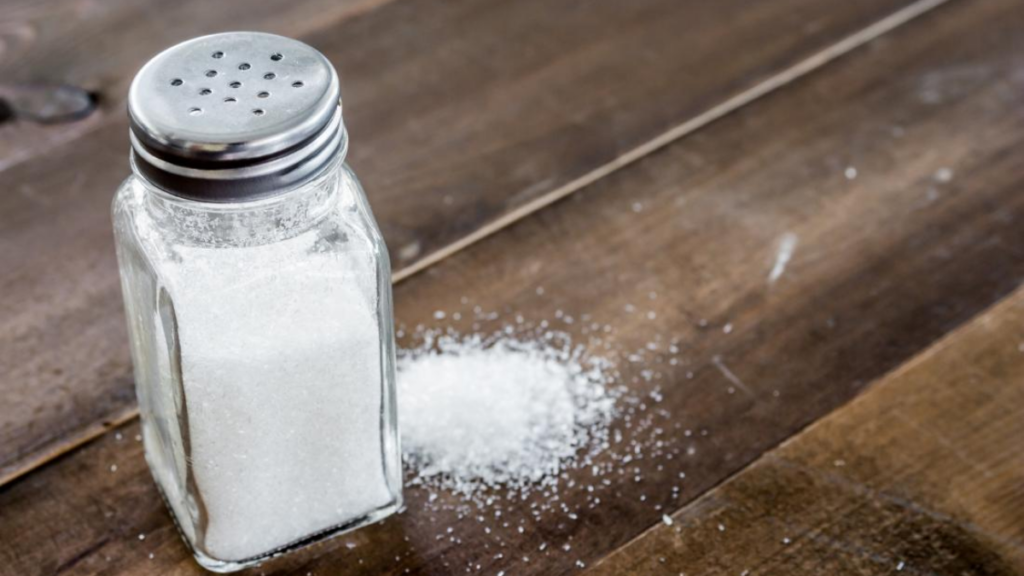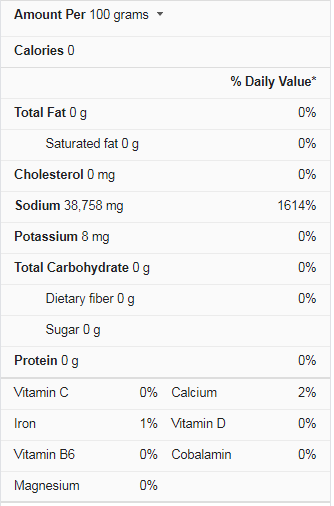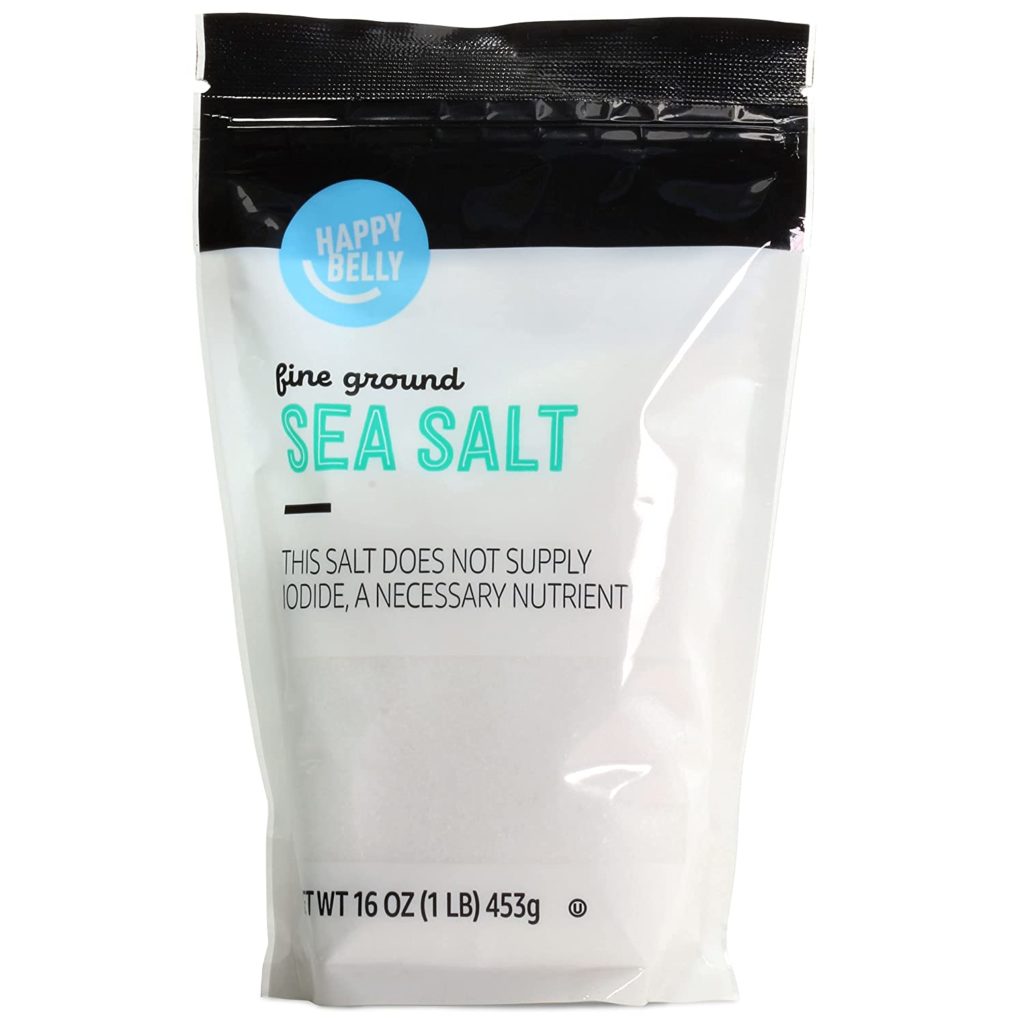It’s not easy to choose the best salt to use for cooking, but you can try these tips to help you make a decision. Using suitable salt is crucial for your kitchen. Some types of sea salt are better for cooking, while others can shine as finishing salts. By following these tips, you can decide on the best salt to use for your kitchen. It’s a good idea to experiment with different sea and table salt types before making your final decision.
Salt Nutrition Facts
What Is Salt?
The most important source of sodium in your diet is salt. It’s also known as sodium chloride (NaCl), and it’s made up of 40% sodium and 60% chloride. The terms “salt” and “sodium” are frequently interchanged today. Iodine, iron, folic acid, or a mix of these are added to some salt variations. Iodine is frequently added to table salt, for example. Many vital bodily activities require sodium, including fluid balance, neuron health, nutrition absorption, and muscle function. Sodium can be found in various foods, including bread, cereals, cured meats, sauces, condiments, cereals, chips, crackers, and soups. Salt has traditionally been used to preserve food. High salt concentrations aid in preventing bacterial growth, which can lead to food spoilage. Salt is usually obtained by evaporating saltwater or mineral-rich water from salt mines.
Points To Remember While Choosing Salt
Here are some marine points that should be remembered while choosing salt:
- When choosing the right type of salt for your cooking, you should first decide what you prefer. Sea salt is a good choice for cooking because it has a mineral taste and is readily dissolved.
- Coarse sea salt is perfect for finishing dishes and is available in flakes and other coarse textures. The coarse texture makes it easier to sprinkle on your dishes and is available in different colors and varieties. Before buying sea salt, you should check the brand and the taste of the salt.
- Depending on the dish you are making, you may want to buy kosher salt or sea salt. Table salt comes in small flakes, making it easier to measure it correctly.
- For special effects, you may want to use fleur de sel or fleur de migre. If you don’t have access to these types of salts, you can buy them at most grocery stores in the U.S.
- The best salt for cooking depends on your cooking style. You should choose the type of salt that works best for the dish you are making. The type of salt you use will depend on how you plan to use it.
- If you’re going to cook for a large group, you can use Diamond Crystal Kosher for the bulk seasoning. When you’re preparing restaurant-sized portions, you should use kosher sea salt. If you are cooking for a small crowd, you can also use sea salt like Maldon.
- The most common salt to use for cooking is table salt, and it’s the least expensive one at the store, and it’s also available in various sizes. The most commonly used type of sea salt is table salt.
How Much Salt Do You Need?
For decades, health authorities have urged people to reduce their sodium intake. According to the American Heart Association (AHA), adults should consume no more than 2,300 mg of sodium per day, with a goal of 1,500 mg or 3/4 teaspoon of salt. Despite this caution, the average American consumes 1.5 teaspoons of salt per day, far more than the recommended amount. It’s critical to follow your healthcare professional’s instructions if you have any health conditions and have been advised to minimize your salt intake. However, if you’re in good health and consume a well-balanced diet, you probably don’t need to be concerned about your salt intake.
Is Salt Healthy Or Unhealthy?
Salt is necessary for the proper functioning of your body and excellent health. Consuming too much or too little salt, on the other hand, can be dangerous and unhealthy. Eating a well-balanced diet is essential, as it is for most other nutrients and foods. Many healthful, nutrient-dense foods naturally contain little or no salt, such as fruits, vegetables, cereals, raw nuts, legumes, and seeds. The salt-related disease can be reduced by following a healthy eating pattern that includes whole foods like these. The DASH (Dietary Approaches to Stop Hypertension) and Mediterranean diets, for example, can help lower blood pressure. Vegetables, whole grains, fruits, low-fat dairy, and lean protein are abundant, but sweets, harmful fats, and red meat are scarce. If your doctor has instructed you to limit your salt intake, studying more about these two diet patterns may be worthwhile.
Side Effects Of Consuming Too Much Salt
While your body needs a certain amount of salt to function correctly, too much salt can harm your health.
It might harm heart health
Excess salt consumption is a worldwide issue, and it’s a risk factor for hypertension, or high blood pressure, for example. Hypertension raises your chance of heart failure, which occurs when your heart cannot adequately pump blood throughout your body. Salt impacts blood pressure through several intricate routes that affect the body’s hormonal, inflammatory, immunological, and digestive systems. The renin-angiotensin system, which regulates blood pressure and sodium levels, may be suppressed by excessive salt consumption. Fortunately, lowering your salt intake can help you decrease your blood pressure, especially if you have salt-sensitive hypertension, which is a medical condition.
Possibly Linked To Stomach Cancer
Stomach cancer, sometimes called stomach cancer, is one of the most frequent cancers and the fourth highest cause of death from cancer worldwide.
A high salt diet, which often includes foods like salted meats and pickled vegetables, has been linked to an elevated risk of stomach cancer in several studies. In a 2016 study of 40,729 Japanese adults, researchers discovered that those with more salty food preferences had a 30% higher chance of acquiring stomach cancer than those who chose less salty meals.
Side Effects Of Too Little Salt
Too much salt, like too little, can be dangerous. According to some studies, a low-salt diet has been linked to low blood pressure, dehydration, low sodium levels, and high blood fat levels.
Low blood pressure or hypotension
Those with normal blood pressure might develop hypotensive, which means their blood pressure is lower than it should be. Hypotension is a severe condition, and dizziness, nausea, fainting, blurred vision, sadness, and dehydration are some indications and symptoms. Hypotension is especially dangerous for those with heart failure because many treatment programs dramatically lower blood pressure. If you fall into this category, you must regularly monitor your blood pressure readings.
Dehydration
Because sodium is essential for fluid balance, a low salt diet can lead to dehydration when your body doesn’t have enough fluid. Skin changes, mouth dryness, and thirst are all signs of dehydration. Dehydration, if left untreated, can lead to hospitalization and even death. Dehydration is more common in older persons and people who are malnourished, so they should monitor their regular fluid intake and any signs of dehydration.
Low Blood Sodium Levels
Hyponatremia is a condition in which sodium levels in the blood are lower than usual due to a low-salt diet. Hyponatremia can cause significant neurological issues such as decreased mental state, seizures, water on the brain, coma, and death in some people. GI (gastrointestinal tract) symptoms include appetite loss, vomiting, and nausea in some people with the illness. Hyponatremia is more common in older persons, and it can lead to falls and other medical issues. As a result, people should seek medical help if they encounter any of the symptoms listed above.
Elevated cholesterol and triglycerides
The salt limitation has been linked to higher LDL (bad) cholesterol and triglyceride levels in the blood. A 2016 study looked at how lowering salt in the diet influenced blood fat levels in 12,210 persons with and without hypertension. Eating a low-salt diet elevated cholesterol by 2.9 percent and triglycerides by 6.3 percent in both groups. This is important to remember because LDL (bad) cholesterol and triglycerides have been linked to an increased risk of heart disease.
Features:
- 16-ounces of Happy Belly Sea Salt
- Packaging may vary
- Kosher certified
- Fine ground salt crystals dissolve easily for balanced flavor. Convenient for cooking, baking and finishing
- Our fine sea salt is created by sea water that has been evaporated by the sun
- No artificial flavors, colors
- Resealable bag
Conclusion
The best salt to use for cooking is the most common type. Its crystals are tiny and easy to measure. This type is also used for cooking, and it comes in different sizes and is very convenient in addition to table and kitchen salt, kosher salt, Himalayan sea, and Celtic sea salt. Among the most popular types, the best choice is Himalayan sea salt.




